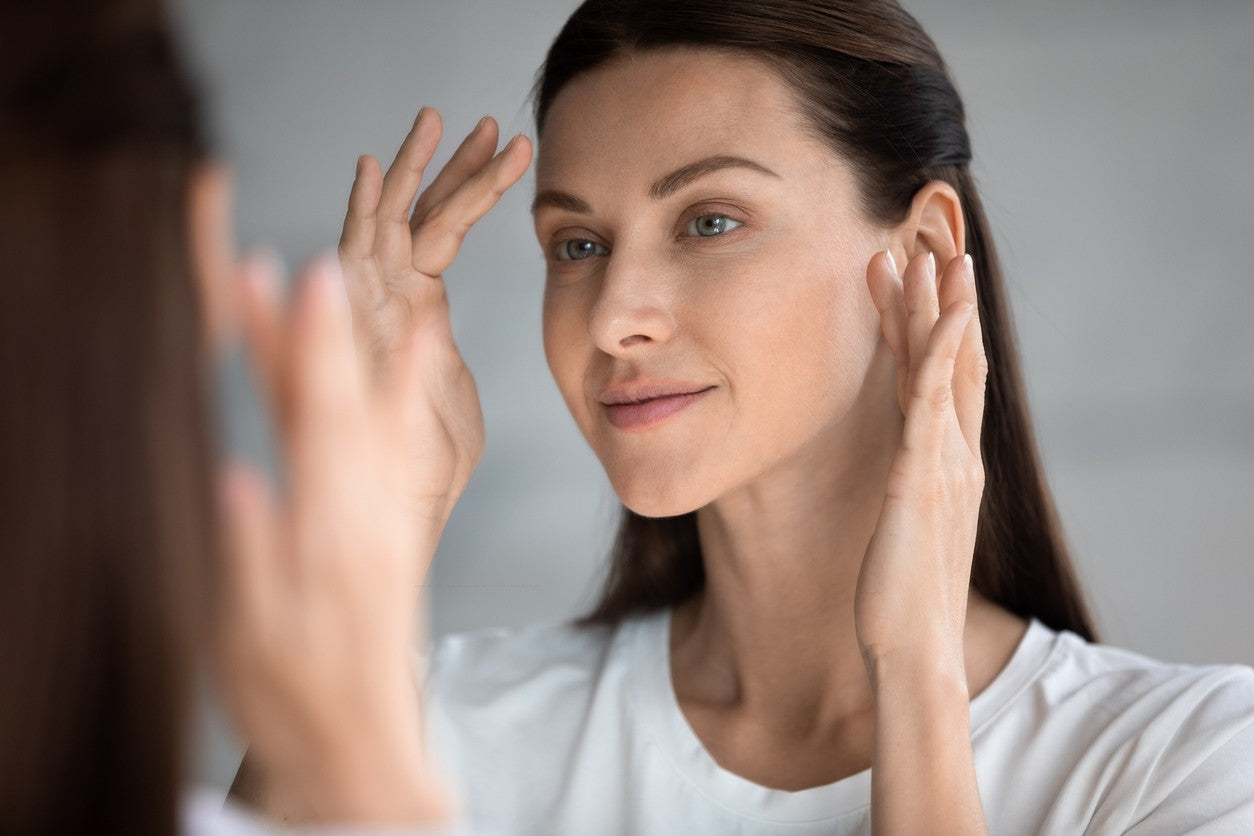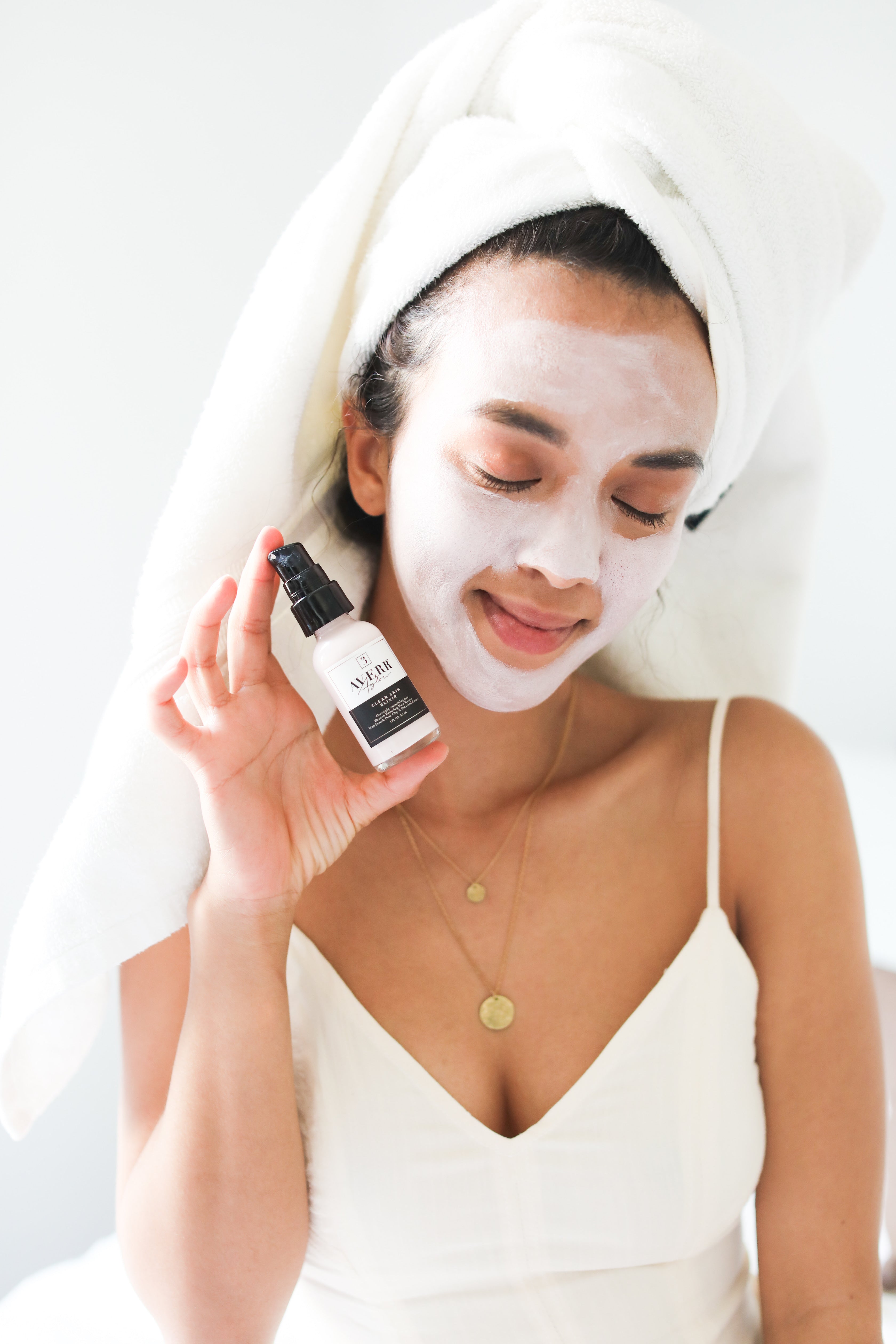
What You Didn't Know About Hyaluronic Acid
Hyaluronic Acid may sound like something you might find on a shelf in a busy auto repair shop, but it’s actually produced naturally in your body, in your eyes and joints, as part of your own repair shop! It’s been a favorite in products as a moisture-rich ingredient that produces dewy skin, soothes redness, and reduces the appearance of wrinkles.
But we have an exciting update. In our extensive, ongoing research, we’ve discovered an even better ingredient for our natural, cruelty-free skincare products. One that produces similar outcomes as hyaluronic acid, but it’s so organic that it literally grows in a forest!
Before we start digging into the dirt of that magical timberland, read further to find out what hyaluronic acid is, what it’s been used for, and how a similar but all-natural ingredient budding on fallen trees in Asia has changed the way we approach the products we use in our best face serums, natural facial toners, and daily face cleansers.
First, what is Hyaluronic Acid?
1) Hyaluronic acid is a clear, viscous substance made within our skin and eyes to retain water and stay lubricated. It acts as a cushion and supplement for joints and other tissues; it decreases swelling and increases moisture. It’s like hydrated bubble wrap for your body!
2) It’s an antioxidant and an anti-inflammatory, similar to vitamin A and vitamin C, therefore it strengthens and improves the production of your collagen Collagen production reduces as we begin to age. This means your skin will have less firmness, elasticity, and will inevitably start showing the signs of aging at an accelerated rate, if it’s not addressed. Collagen is also an integral part of maintaining the structure of your skin. So the more of it you can get, the better.
3) Hyaluronic Acid is also a humectant, like glycerin or propylene glycol, which are used to reduce the loss of moisture in a product. For example, in a toner, water binds to the skin to soothe and help restore the natural pH level. It’s used in dietary supplements, face creams, serums, eye drops, and injections. (*)
However, some hyaluronic acid has been synthetically altered, and if injected, can cause a bevy of side effects like pain, redness, itching, swelling and bruising. This is not to say we don’t believe in its benefits within products – we do! However, these same benefits and more can be found in the wild and edible fungus we mentioned earlier, growing straight out of Mother Earth….

The SNOW MUSHROOM.
Here’s the clincher: The Snow Mushroom is not only beautiful, but it’s essentially a moisture sponge! It can hold up to 500 times its weight in water, making it an intensely-hydrating addition to any product. And what do we always want when we moisturize and clean our face? Hydration! When do we want it? Now!
Though hyaluronic acid also holds an abundance of moisture, the snow mushroom takes deeper strides in the race to your best face: It’s made up of much smaller particles, so they infiltrate your skin more deeply, enriching your complexion with dewy goodness.
It also contains anti-inflammatory molecules, which lock that moisture in place.
The Vitamin D that also populates this tremendous truffle acts as a moisturizer, and even a healer for acne! Vitamin D has shown impressive skin healing abilities, assisting with cell growth, healing wounds, and maintaining the barrier function of the skin.

And there’s more. The snow mushroom also contains anti-inflammatory molecules; these valuable compounds help calm irritation, and fight oxidative stress. Just as we may see a therapist for mental stress, or go to the doctor for bodily stress or pain, you also deserve a meditative, medicinal way to treat and care for your skin.
And it produces collagen, which we mentioned above – great for plumpicity and plasticity; a sweet relief as we age, and our skin gets thinner.
The snow mushroom also seems to hit all the senses!
- Touch (soft and silky),
- Smell (sweet and woody)
- Sight (gelatinous and translucent)
- Taste (neutral, but no need to eat it!)
- Sound - Doesn’t “snow mushroom” even sound more soothing?
Talk to your friends about it! Let them know it’s an organic, cruelty-free (as always), natural facial toner and cleanser, one that can be a wonderful, soothing part of your skincare routine! Tell them about its medicinal attributes in hydrating your moisturizer, tackling acne, avoiding sunburns and protecting fragile skin! That it’s perfect for either all-over coverage, or focusing on sensitive skin around your eyes and on your lips.

Now, for the good stuff – the Averr Aglow products in which our snow mushroom really blooms in the spotlight! Whether it’s paired with other enriching botanicals like strawberry extract and illipe seed butter, providing sumptuous hydration and rejuvenation during the day, or delivering velvety, dreamlike nutrient-renewal at night, these products can restore your eyes, refresh your skin, and nourish your mental well-being.

All in all, both hyaluronic acid and snow mushroom have similar benefits, covering everything from clear skin products to natural makeup remover. But everyone deserves a connection to the deep-earth, tree-to-table, water-hugging, plumping benefits of this lovely chanterelle. And we are honored to make the introduction to you.





